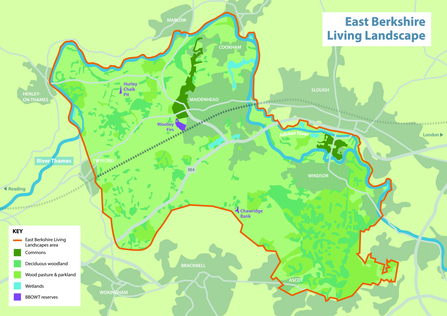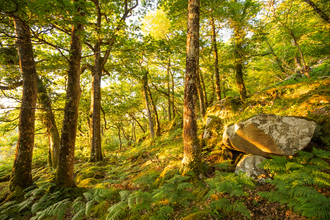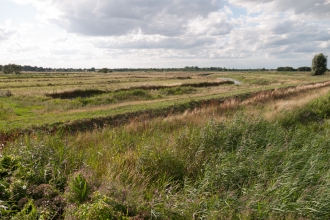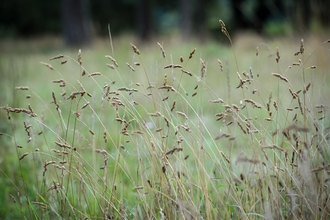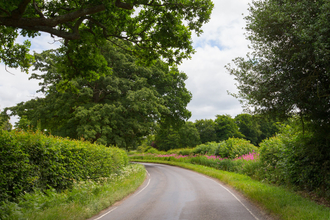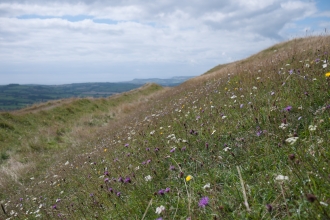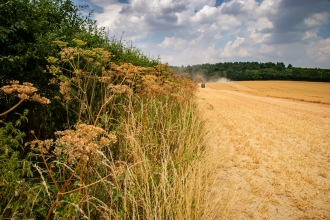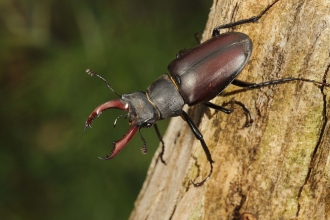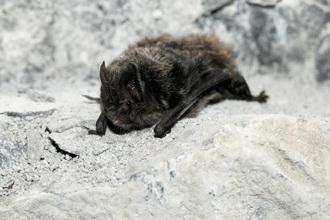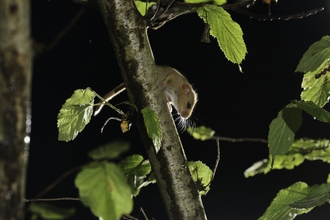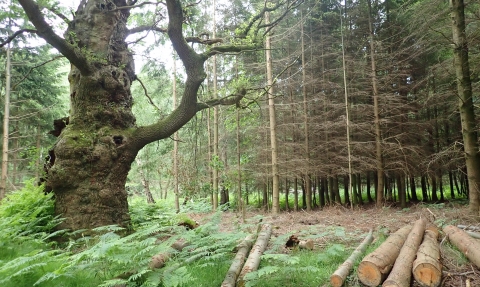
Trees at Windsor Great Park by Hilary Philips
East Berkshire Living Landscape
Ancient and internationally important species in a threatened and fragmented landscape.
The East Berkshire Living Landscape (EBLL) scheme, established in 2020, covers 240 square kilometres of land in what used to be the historic Royal Hunting Forest of Windsor. It includes Windsor Great Park which has the largest continuous tract of woodland and parkland in Berkshire, and one of the largest collections of ancient and veteran oak trees remaining anywhere in northern Europe.
Over an eighth of the project area is designated as important for wildlife, locally, nationally or internationally. The Living Landscape has records of over 170 threatened or endangered species including hazel dormouse, barbastelle bat, violet click-beetle and stag beetle. Wood pasture and historic parkland are important features in the landscape, alongside the River Thames and its associated wetland habitats.
Making a difference for threatened wildlife
Our aim is to protect, restore, enhance and maintain the ancient and internationally important habitats and species of the East Berkshire Living Landscape, to create an environment rich in wildlife, valued by all.
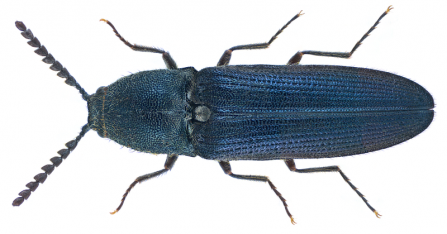
Violet click beetle, Limoniscus violaceus, an incredibly rare species of beetle only found in three places in the UK - including within the East Berkshire Living Landscape. Photo by U Schmidt
As with many of our landscapes, climate change, habitat loss and fragmentation are among the main threats to biological diversity and reversing these impacts is a high priority.
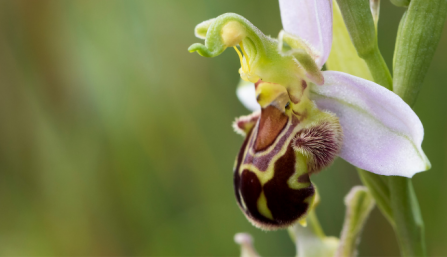
Bee orchid by Chris Lawrence
We are working with key stakeholders including local landowners, local authorities, and specialist groups, bringing communities together to re-build nature and allow it to flourish across a well-connected, resilient landscape for generations to come.
Our nature reserves in the East Berkshire Living Landscape area include:
• Chawridge Bank Nature Reserve, a small area of old Berkshire grassland dotted with large anthills and home to the rare grizzled skipper butterfly.
• Hurley Chalk Pit provides a sheltered site for many species of butterfly and bee, pyramidal and fragrant orchids.
• Woolley Firs, a 300 year-old farm at the heart of the East Berkshire Living Landscape. The Environmental Education Centre here has fantastic outdoor learning spaces in the woodland and meadows.
• The Environmental Centre at Windsor Great Park, an education project in partnership with the Crown Estate.
Current work in the Living Landscape
Habitat management
We give advice and support to landowners and land managers with the aim of enhancing habitats for wildlife and maximising climate change resilience. We are working with local groups including WildCookham and Wild Maidenhead, and wildlife groups including the Berkshire and South Bucks Bat Group, Berkshire Mammal Group and Berkshire Ornithological Society.
We are currently developing projects to help woodland bats, stag beetles, dormice, turtle doves and the habitats they depend upon.
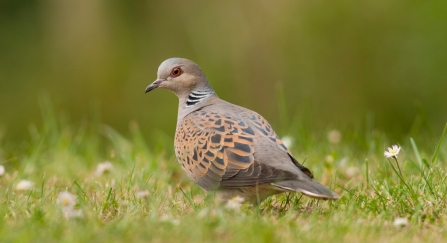
Turtle dove, Streptopelia turtur, on lawn by Dawn Monrose
Training
We work with partners, including the People's Trust for Endangered Species, the Bat Conservation Trust, and The Wildlife Trust for Bedfordshire, Cambridgeshire & Northamptonshire, to deliver training to our volunteers to help them look after our rare habitats and species.
Get involved
The volunteer teams operating out of Woolley Firs carry out habitat management tasks at EBLL reserves and on the nearby Thames Basin Heaths Wildmoor and Broadmoor sites.
If you are interested in any other aspect of the EBLL please contact us at info@bbowt.org.uk.

